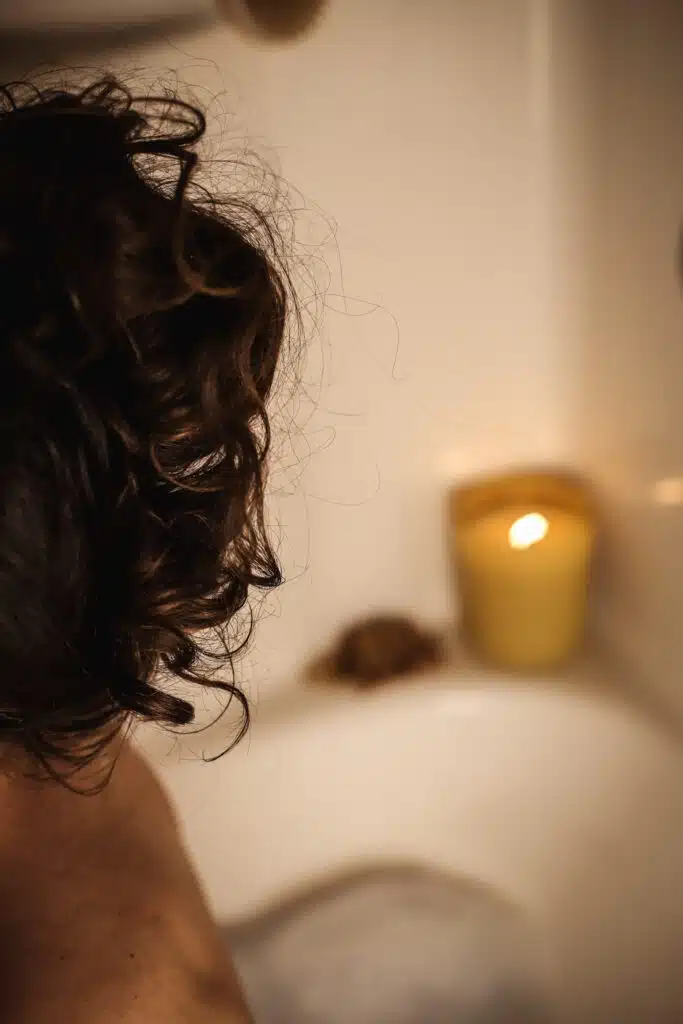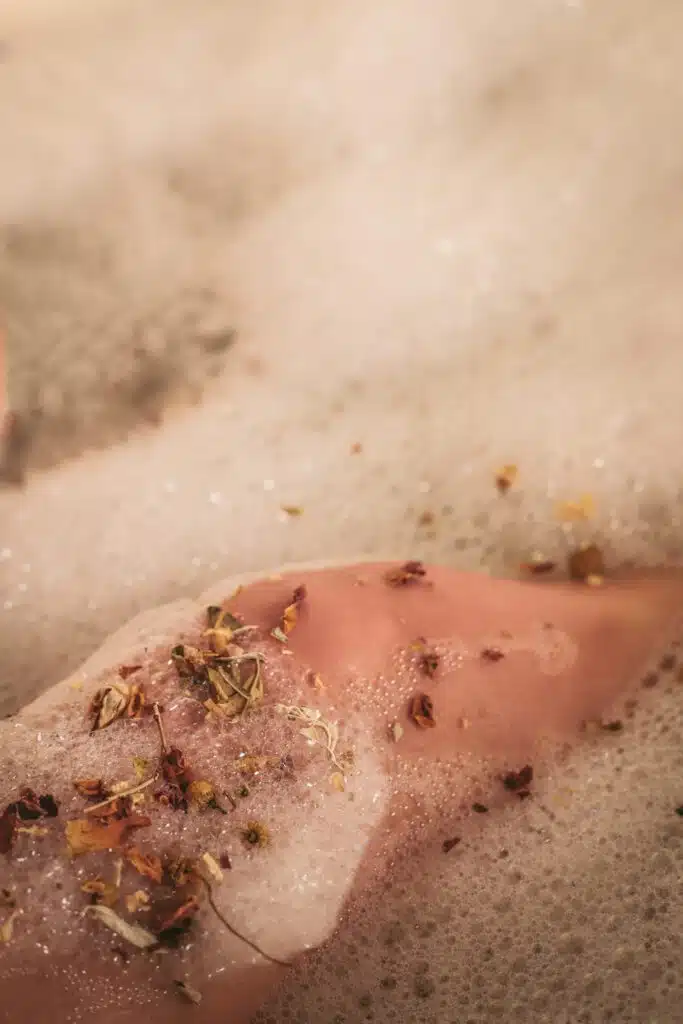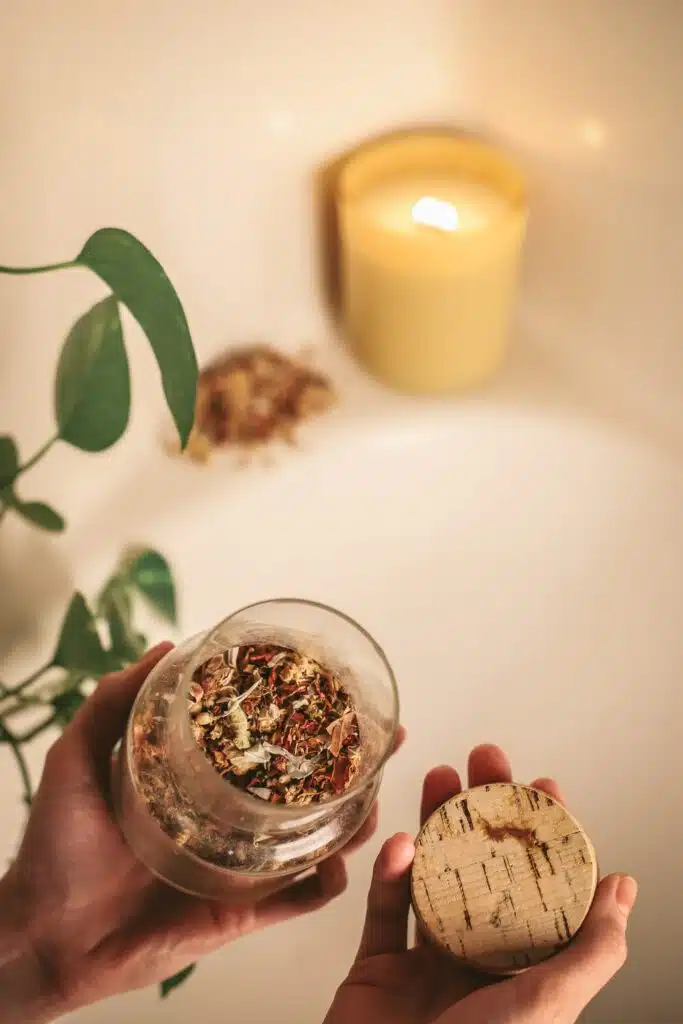
Winter is the universal bath season. Soaking in a hot bath on a cold, wet day is just the ultimate luxury we can experience as humans. Look, I know this is hyperbolic, but I’m a bath girl; baths are everything to me. I love to enjoy regular baths year around, but in the winter the hot water can dehydrate my already very dry skin. Last winter, I actually had to stop having baths because my eczema got so bad! As you can imagine, I was pretty devastated until I discovered the herbal bath.
Herbal baths add back nutrients to otherwise plain water. Think Epsom salts, medicinal herbs, nourishing oils, and even raw milk. Yes, you heard that correctly, I said raw milk. In this blog, I am going to share all my favorite ways to enhance my bathwater to hydrate and heal my skin, muscles, and spirit.
What ingredients should I use in an herbal bath?
Some of my favorite ways to ramp up the humble bath include…
Medicinal Herbs
Soothing:
- Chamomile
- Lavender
- Hops
Healing:
- Rose hips/rose petals
- Calendula
- Elderflower
Invigorating:
- Rosemary
- Eucalyptus
- Lemon balm
Honorable mention:
- Basil
- Comfrey
- Eucalyptus
- Sage
- Thyme
- Yarrow
Now you can certainly add these herbs to float in your bath, or you can place herbs in a reusable mesh or cloth tea bag to steep in your bath with you. I like to source my herbs and tea from Mountain Rose Herbs in bulk for the best value.


Epsom Salts
Epsom salts are salts that occur naturally from springs in the town of Epsom, England. These salts turn into magnesium and sulfate when dissolved in water which can be absorbed through the skin. Epsom Salts have been used for centuries to relax sore muscles, treat skin conditions, heal sprains and bruises, and so much more. I would also recommend searching Mountain Rose Herbs for Epsom Salts.
Oils
Adding oils to your bath is a great way to increase hydration. When I add just a teaspoon or two of oil to my bath, my skin comes out feeling nourished and soft instead of tight and dry. The most economical way to do this is to use Jojoba oil which is a non-comedogenic oil that mimics the natural oils of the skin. Organic skin oils can get expensive, but Jojoba oil is usually the best bang for your buck. If you want to try out a few others, I’d recommend Argan oil, Marula oil, or Rosehip Seed oil. You can find incredible organic oils from Mountain Rose Herbs as well.
Raw Milk
Finally, the ingredient we’ve all been waiting for: organic raw milk. Any followers of this blog know I am a die-hard fan of local raw milk. Yes, it tastes delicious, has many health benefits, and comes from local happy cows, but did you know raw milk is also good for your skin? This is because raw milk has many enzymes, proteins, and vitamins which help repair the skin. I’m sure you know that it’s rumored Cleopatra bathed in milk every day to nourish her beautiful skin and I’m sure they didn’t have homogenization or pasteurization in ancient Egypt! Because organic raw milk can be very expensive, I usually bathe in raw milk that has soured after a week or so. There is usually a little bit of milk I can’t finish before it expires and I like to save that for baking or bathing.
If you want to find raw milk near you, check out realmilk.com.
To learn more about raw milk, read my blog about it!
How to draw an herbal bath
- Start by filling your tub with clean hot water
- Add herbs to reusable tea bag and allow to steep in the bath with you
- Now is when you can add a few teaspoons of oil, a half cup of raw milk, or a scoop of Epsom salts.
- Soak, relax, and enjoy!

Herbal Baths are truly one of my favorite ways to romanticize my life and make an ordinary & necessary task feel luxurious. If you’re struggling with the winter blues, taking a special nourishing bath can really help. I also have a whole blog about how to savor and enjoy winter which goes much more in-depth on this topic.
Leave a Reply